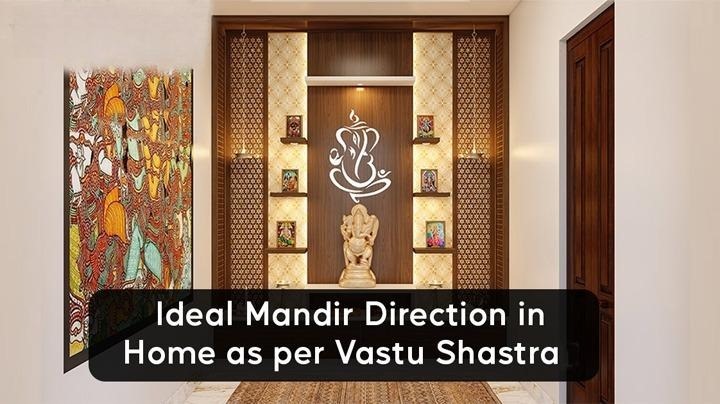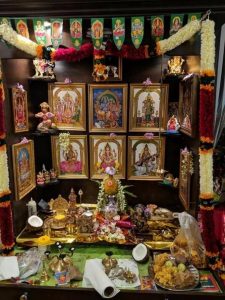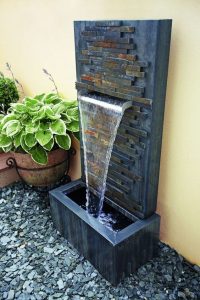When setting up a mandir or pooja room at home, its placement and direction play an essential role in shaping the energy and atmosphere within the house. According to Vastu Shastra, an ancient Indian science of architecture, the position of the mandir directly influences the flow of energy throughout the home. The right placement, direction, and height of the mandir can bring harmony, prosperity, and peace into the lives of those who live there. This comprehensive guide explores the ideal mandir direction in the home as per Vastu, covering all crucial factors such as placement, facing direction, height, and position. We’ll also address some frequently asked questions, such as which direction the God should face in the pooja room and whether it is acceptable to keep the mandir in the west direction.
Importance of Mandir Placement in Vastu Shastra
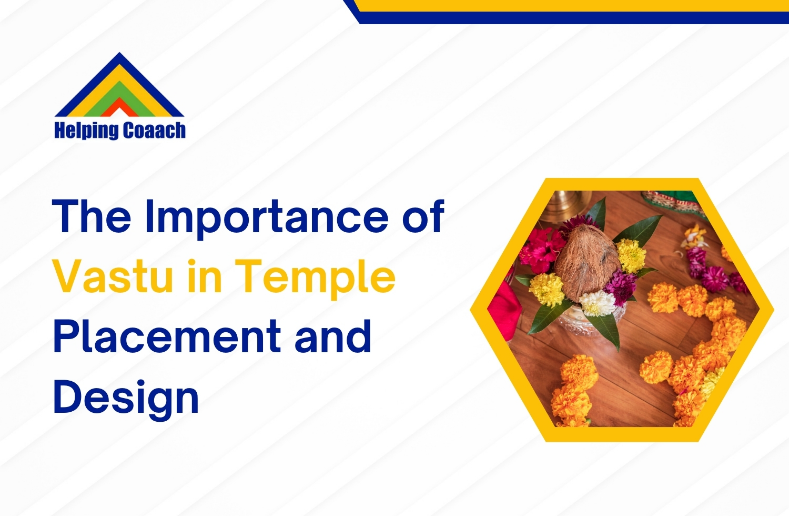
The mandir is not just a physical space within the home; it is a sacred area that fosters a deep sense of spirituality, peace, and positivity. It is believed that the energy that radiates from the mandir affects the household’s well-being, prosperity, and overall harmony. According to Vastu Shastra, the correct positioning of the mandir can create a balanced environment that encourages health, success, and spiritual growth. Therefore, choosing the right mandir position in your home as per Vastu is absolutely essential for ensuring the optimal flow of positive energy throughout your living space.
Also Read:- Crystal Tortoise Face Direction in Home
Ideal Directions for Mandir Placement

1. East and North-East Directions
The north-east direction, also known as the Ishan Kona, is considered to be the most auspicious direction for mandir placement. This direction is associated with prosperity, positive energy, and peace. It is believed that when the mandir is placed in this direction, it attracts blessings and serenity for the entire household.
Similarly, an east-facing mandir is considered highly beneficial as it ensures that the worshipper faces the rising sun during prayers, a symbol of enlightenment and spiritual awakening. This positioning is known to provide a heightened sense of energy during prayers, fostering a deep connection with the divine.
2. North Direction
The north direction is also considered a favorable location for the mandir. This direction is believed to attract wealth and success, making it ideal for families seeking prosperity. Placing the mandir in the north aligns the space with Lord Kubera, the god of wealth, thereby inviting abundance and financial stability into the household.
3. Can We Keep Mandir in West Direction?
While the west direction is not considered the most ideal for mandir placement, it can still be acceptable under certain conditions, especially if there are space constraints. In such cases, it is recommended that the idols face east, and worshippers should face west while praying. However, to ensure a balanced flow of energy, it is important to assess the overall layout and surroundings before choosing this direction.
4. Mandir in South-West Direction
The south-west direction is generally discouraged for mandir placement as it is considered the zone of stability, which is not ideal for spiritual activities. This direction is believed to block positive energy flow, and placing a mandir here may hinder the spiritual vibrations necessary for worship. Therefore, it is advisable to avoid placing the mandir in the south-west corner of the house.
Also Read:- Which Direction Should We Keep an Elephant Statue at Home?
Mandir Position in Home as per Vastu
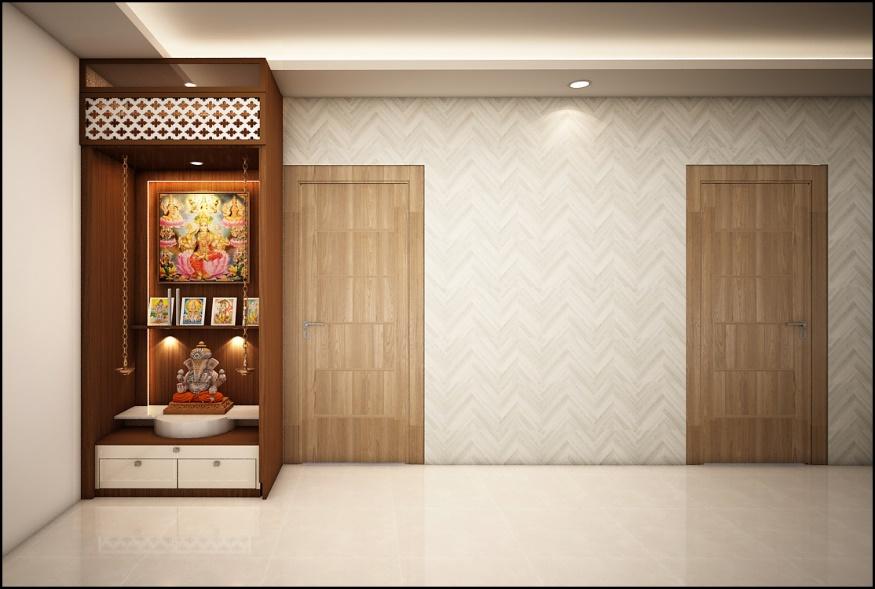
1. Dedicated Room for Mandir
If you have sufficient space, creating a dedicated pooja room is highly recommended. The ideal location for such a room is the north-east corner of the house, as it ensures the highest flow of positive energy. It is essential to keep this room clean, organized, and clutter-free. Additionally, it should be situated away from noisy or disruptive areas, such as the bathroom or kitchen, to maintain its sanctity.
2. Mandir in Flats and Apartments
For those living in flats or apartments, the north-east corner of the living room is considered the best place for the mandir. This direction helps create an atmosphere of peace and spirituality. It is advisable to avoid placing the mandir in bedrooms, as the space is not conducive to spiritual practices. However, if you must keep the mandir in the bedroom, you can use a curtain to separate it during non-worship hours to maintain the sanctity of the space.
3. Mandir at Entrance of House
A mandir placed at the entrance of the house is highly auspicious. It serves as a welcoming space, inviting positive energy into the home. This location creates a sacred and peaceful atmosphere as one enters the house, ensuring that the first impression of the home is filled with spiritual vibrations and harmony.
Temple Design and Height as per Vastu
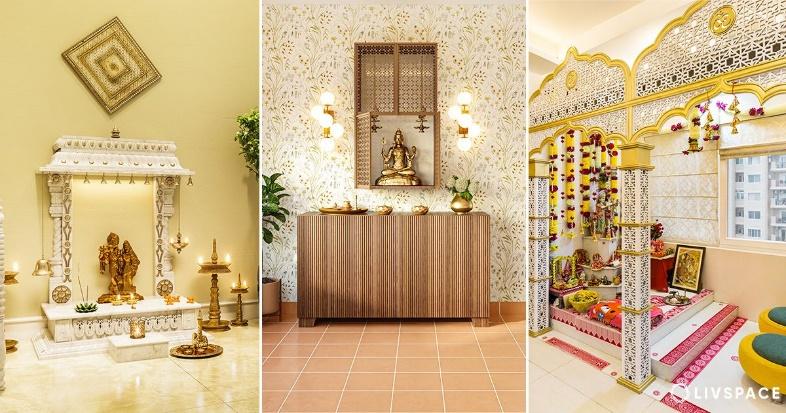
1. Mandir Height
The height of the mandir is an important consideration in Vastu Shastra. The temple should always be elevated and placed on a pedestal or platform. It is recommended to place the mandir 6 to 12 inches above the ground level. Avoid placing the mandir directly on the floor, as this is believed to reduce the flow of energy and diminish its sacred significance.
2. Idol Placement
The placement of idols in the mandir is another crucial aspect of Vastu. The idols should be placed at eye level, ideally between 6 to 12 inches above the base. This ensures that the worshipper can view the idols with respect and reverence. Additionally, it is important to avoid placing idols facing each other or the entrance door. Instead, ensure that they face either the east or west, which are considered the most spiritually aligned directions.
3. What Should Be the Direction of Mandir at Home?
The entrance of the mandir should ideally face east, as this direction is considered to attract positive vibrations during prayers. The east-facing mandir encourages spiritual growth, enlightenment, and an enhanced connection with the divine, making it an ideal choice for most homes.
Materials and Maintenance
1. Materials for Mandir Construction
When it comes to constructing the mandir, it is recommended to use natural materials like wood or marble. These materials are considered auspicious as they symbolize growth, stability, and strength. Avoid using materials like glass or metal for the mandir, as they are not ideal in terms of Vastu. A wooden mandir, in particular, is favored as it exudes a sense of warmth and stability, creating a serene space for worship.
2. Cleanliness and Décor
It is essential to keep the mandir area clean and uncluttered to ensure that positive energy can flow freely. Avoid storing non-religious items in the mandir, as this can diminish its sanctity. Additionally, the décor of the mandir should be simple and calming. Use light, soothing colors such as white, cream, or light yellow to create a peaceful and harmonious atmosphere that enhances the spiritual experience.
Additional Vastu Tips for Temple at Home
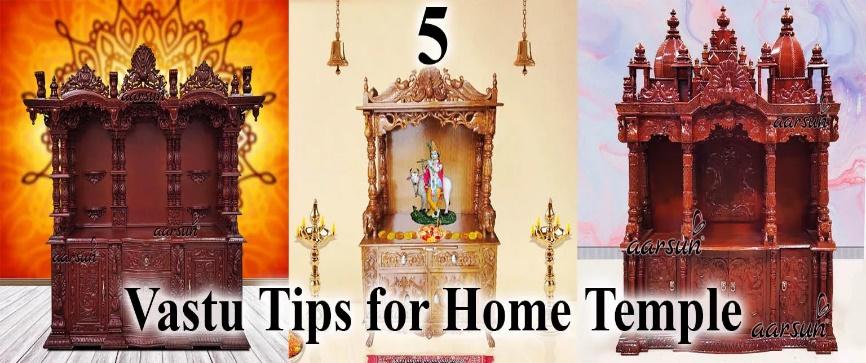
- Avoid placing the mandir under a staircase as this is believed to obstruct the flow of positive energy and may disrupt the peaceful vibrations needed for spiritual activities.
- Do not place the mandir next to the bathroom, as the negative energy from the bathroom can interfere with the positive vibrations of the mandir.
- Ensure the mandir area is well-lit, symbolizing knowledge, wisdom, and enlightenment.
- Never keep broken idols or chipped structures in the mandir, as they are considered inauspicious and may bring negative energy.
- Keep a designated, organized space for storing pooja items, ensuring that these items are well-maintained and properly arranged.
A Harmonious Mandir Design: Aesthetic Considerations
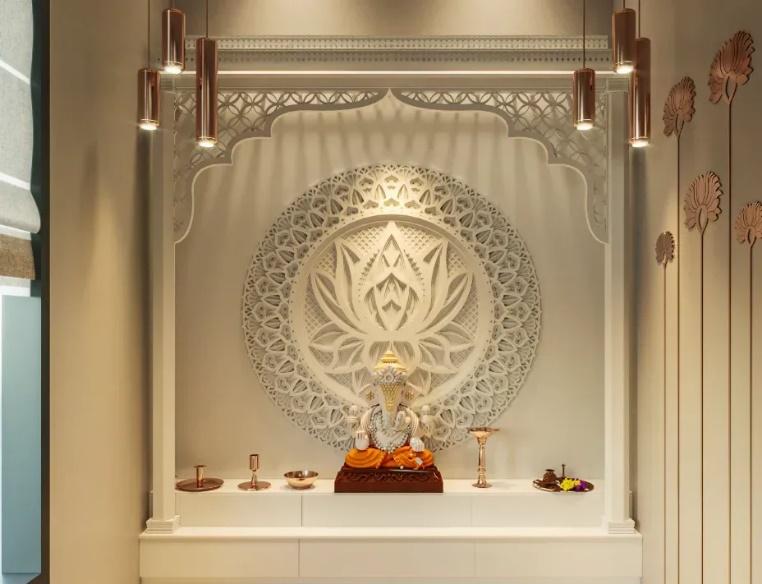
While functionality is key when setting up a mandir, the aesthetics also play an important role in ensuring that the space feels serene and sacred. Consider the design of the mandir, keeping in mind the overall decor of the room. A traditional wooden mandir is timeless and can blend well with a variety of interior styles. For a more modern touch, you can explore minimalistic designs that maintain the spiritual integrity of the space.
Creating a Spiritual Ambience with Lighting and Incense
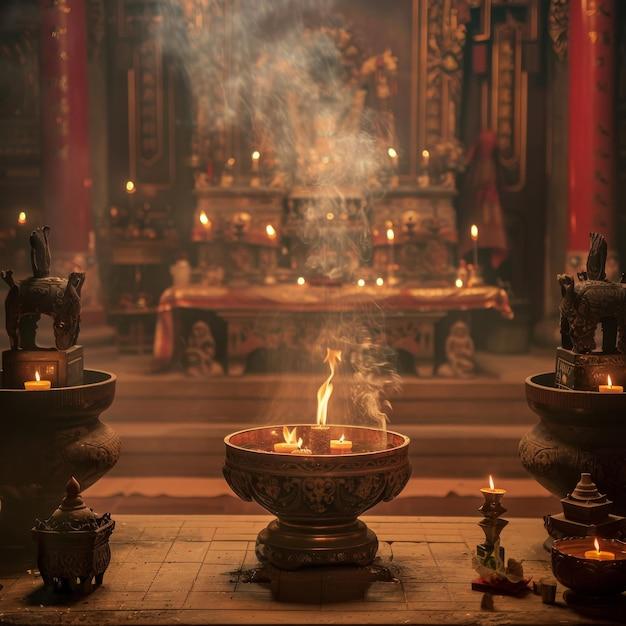
Lighting and fragrance are vital elements in setting the right mood for worship. Soft lighting, such as traditional diyas or lamps, creates a warm and inviting atmosphere. The use of incense or flowers can further elevate the sanctity of the mandir. Ensure that the space is free from harsh artificial lights and instead use natural light sources or warm-toned bulbs to maintain a calming effect.
Conclusion
The proper placement and design of your mandir according to Vastu can create a sacred environment that attracts positive energy and brings peace, prosperity, and spiritual growth to your home. Whether you have a dedicated pooja room or a small corner in your living space, following these Vastu principles ensures that your mandir enhances the spiritual atmosphere of your home.
feel free to check out our detailed blog on the 10 Longest Roads in the World, where we dive into some fascinating facts about the world’s longest and most historic roads.
FAQs
When setting up a mandir or pooja room at home, its placement and direction play an essential role in shaping the energy and atmosphere within the house. According to Vastu Shastra, an ancient Indian science of architecture, the position of the mandir directly influences the flow of energy throughout the home. The right placement, direction, and height of the mandir can bring harmony, prosperity, and peace into the lives of those who live there. This comprehensive guide explores the ideal mandir direction in the home as per Vastu, covering all crucial factors such as placement, facing direction, height, and position. We’ll also address some frequently asked questions, such as which direction the God should face in the pooja room and whether it is acceptable to keep the mandir in the west direction.
Importance of Mandir Placement in Vastu Shastra

The mandir is not just a physical space within the home; it is a sacred area that fosters a deep sense of spirituality, peace, and positivity. It is believed that the energy that radiates from the mandir affects the household’s well-being, prosperity, and overall harmony. According to Vastu Shastra, the correct positioning of the mandir can create a balanced environment that encourages health, success, and spiritual growth. Therefore, choosing the right mandir position in your home as per Vastu is absolutely essential for ensuring the optimal flow of positive energy throughout your living space.
Also Read:- Crystal Tortoise Face Direction in Home
Ideal Directions for Mandir Placement

1. East and North-East Directions
The north-east direction, also known as the Ishan Kona, is considered to be the most auspicious direction for mandir placement. This direction is associated with prosperity, positive energy, and peace. It is believed that when the mandir is placed in this direction, it attracts blessings and serenity for the entire household.
Similarly, an east-facing mandir is considered highly beneficial as it ensures that the worshipper faces the rising sun during prayers, a symbol of enlightenment and spiritual awakening. This positioning is known to provide a heightened sense of energy during prayers, fostering a deep connection with the divine.
2. North Direction
The north direction is also considered a favorable location for the mandir. This direction is believed to attract wealth and success, making it ideal for families seeking prosperity. Placing the mandir in the north aligns the space with Lord Kubera, the god of wealth, thereby inviting abundance and financial stability into the household.
3. Can We Keep Mandir in West Direction?
While the west direction is not considered the most ideal for mandir placement, it can still be acceptable under certain conditions, especially if there are space constraints. In such cases, it is recommended that the idols face east, and worshippers should face west while praying. However, to ensure a balanced flow of energy, it is important to assess the overall layout and surroundings before choosing this direction.
4. Mandir in South-West Direction
The south-west direction is generally discouraged for mandir placement as it is considered the zone of stability, which is not ideal for spiritual activities. This direction is believed to block positive energy flow, and placing a mandir here may hinder the spiritual vibrations necessary for worship. Therefore, it is advisable to avoid placing the mandir in the south-west corner of the house.
Also Read:- Which Direction Should We Keep an Elephant Statue at Home?
Mandir Position in Home as per Vastu

1. Dedicated Room for Mandir
If you have sufficient space, creating a dedicated pooja room is highly recommended. The ideal location for such a room is the north-east corner of the house, as it ensures the highest flow of positive energy. It is essential to keep this room clean, organized, and clutter-free. Additionally, it should be situated away from noisy or disruptive areas, such as the bathroom or kitchen, to maintain its sanctity.
2. Mandir in Flats and Apartments
For those living in flats or apartments, the north-east corner of the living room is considered the best place for the mandir. This direction helps create an atmosphere of peace and spirituality. It is advisable to avoid placing the mandir in bedrooms, as the space is not conducive to spiritual practices. However, if you must keep the mandir in the bedroom, you can use a curtain to separate it during non-worship hours to maintain the sanctity of the space.
3. Mandir at Entrance of House
A mandir placed at the entrance of the house is highly auspicious. It serves as a welcoming space, inviting positive energy into the home. This location creates a sacred and peaceful atmosphere as one enters the house, ensuring that the first impression of the home is filled with spiritual vibrations and harmony.
Temple Design and Height as per Vastu

1. Mandir Height
The height of the mandir is an important consideration in Vastu Shastra. The temple should always be elevated and placed on a pedestal or platform. It is recommended to place the mandir 6 to 12 inches above the ground level. Avoid placing the mandir directly on the floor, as this is believed to reduce the flow of energy and diminish its sacred significance.
2. Idol Placement
The placement of idols in the mandir is another crucial aspect of Vastu. The idols should be placed at eye level, ideally between 6 to 12 inches above the base. This ensures that the worshipper can view the idols with respect and reverence. Additionally, it is important to avoid placing idols facing each other or the entrance door. Instead, ensure that they face either the east or west, which are considered the most spiritually aligned directions.
3. What Should Be the Direction of Mandir at Home?
The entrance of the mandir should ideally face east, as this direction is considered to attract positive vibrations during prayers. The east-facing mandir encourages spiritual growth, enlightenment, and an enhanced connection with the divine, making it an ideal choice for most homes.
Materials and Maintenance
1. Materials for Mandir Construction
When it comes to constructing the mandir, it is recommended to use natural materials like wood or marble. These materials are considered auspicious as they symbolize growth, stability, and strength. Avoid using materials like glass or metal for the mandir, as they are not ideal in terms of Vastu. A wooden mandir, in particular, is favored as it exudes a sense of warmth and stability, creating a serene space for worship.
2. Cleanliness and Décor
It is essential to keep the mandir area clean and uncluttered to ensure that positive energy can flow freely. Avoid storing non-religious items in the mandir, as this can diminish its sanctity. Additionally, the décor of the mandir should be simple and calming. Use light, soothing colors such as white, cream, or light yellow to create a peaceful and harmonious atmosphere that enhances the spiritual experience.
Additional Vastu Tips for Temple at Home

- Avoid placing the mandir under a staircase as this is believed to obstruct the flow of positive energy and may disrupt the peaceful vibrations needed for spiritual activities.
- Do not place the mandir next to the bathroom, as the negative energy from the bathroom can interfere with the positive vibrations of the mandir.
- Ensure the mandir area is well-lit, symbolizing knowledge, wisdom, and enlightenment.
- Never keep broken idols or chipped structures in the mandir, as they are considered inauspicious and may bring negative energy.
- Keep a designated, organized space for storing pooja items, ensuring that these items are well-maintained and properly arranged.
A Harmonious Mandir Design: Aesthetic Considerations

While functionality is key when setting up a mandir, the aesthetics also play an important role in ensuring that the space feels serene and sacred. Consider the design of the mandir, keeping in mind the overall decor of the room. A traditional wooden mandir is timeless and can blend well with a variety of interior styles. For a more modern touch, you can explore minimalistic designs that maintain the spiritual integrity of the space.
Creating a Spiritual Ambience with Lighting and Incense

Lighting and fragrance are vital elements in setting the right mood for worship. Soft lighting, such as traditional diyas or lamps, creates a warm and inviting atmosphere. The use of incense or flowers can further elevate the sanctity of the mandir. Ensure that the space is free from harsh artificial lights and instead use natural light sources or warm-toned bulbs to maintain a calming effect.
Conclusion
The proper placement and design of your mandir according to Vastu can create a sacred environment that attracts positive energy and brings peace, prosperity, and spiritual growth to your home. Whether you have a dedicated pooja room or a small corner in your living space, following these Vastu principles ensures that your mandir enhances the spiritual atmosphere of your home.
feel free to check out our detailed blog on the 10 Longest Roads in the World, where we dive into some fascinating facts about the world’s longest and most historic roads.
FAQs

